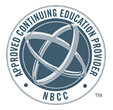QPR for School Health Professionals, Youth Workers, Mentors, and Advocates
One Time Cost of $89.00
Suicide rates among young people are unacceptably high, and recent federal reports indicate they are headed higher still. As someone who works with youth, you are in one of the best possible positions to prevent youth suicide. This version of enhanced QPR training is designed for everyone who works with youth to help keep our kids from dying by suicide. Our school-based suicide prevention program, which includes QPR training, is carried by our partner, Hope Squads.
Note: This course does not teach suicide risk assessment for providers tasked with conducting diagnostic and treatment services. Please see QPRT training for training in this area of clinical practice.
Key topics:
- Scope and nature of youth suicide
- Non-suicidal self-injury
- Bullying and suicide
- LGBTQ and suicide risk
- Screening skills for pre-teen youth
- First episode psychosis
- Suicide-specific evidence-based treatments
Program Purpose
This program is designed to train those who work with youth essential suicide warning signs recognition skills, understand youth suicide and its demographics, as well as how to immediately reduce the risk that a youth will attempt suicide in the near term. Participants learn how to intervene with safe and effective evidence-based strategies to help avert further suicidal behavior, as well as how to make an expert referral.
Program Description
Modularized in a rich mix of text, video, voice-over PowerPoint™ lectures, scenario-based practice sessions, and other state-of-the-art interactive and e-learning technologies, this program provides a dynamic approach to screening for suicide, risk detection, initial intervention, referral and follow up.
Participants who complete this course should be able to:
- Describe the common myths and facts surrounding suicide
- Identify unique verbal, behavioral, and situational suicide warning signs
- Screen youth and young adults at risk of suicide
- Screen pre-teen children for suicide risk
- Inquire about suicidal intent and desire
- Recognize at least three suicide warning signs
- Recognize at least three risk factors for suicide
- Recognize at least three protective factors against suicide
- Describe the role of bullying in youth suicide risk
- Demonstrate increased knowledge, skills, self-efficacy and intent to act to intervene with someone at risk of suicide
- Describe three safe and effective interventions to immediately reduce the risk of a youth suicide attempt
- Describe evidence-based treatments for suicide
- Know how to engage and assist a suicidal colleague or co-worker
- Describe suicide-specific evidence-based treatment
- Demonstrate (in multiple role-plays) the skills taught in this course

